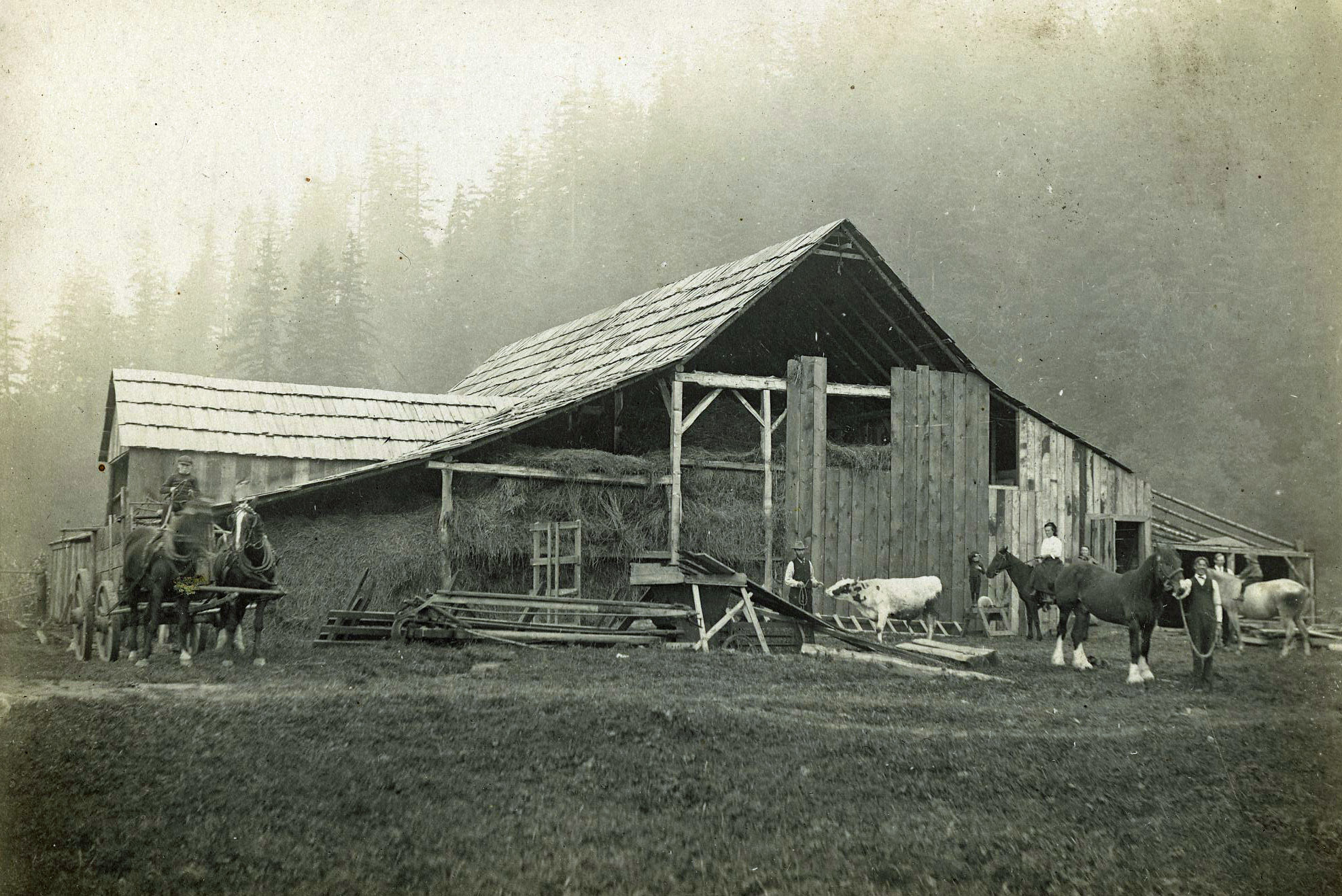Prospectors Turned Settlers
The 1858 Fraser River Gold Rush brought thousands of prospectors through the eastern Fraser Valley of BC as they travelled to interior gold fields. A number of new settlements, including Agassiz, Harrison Mills, Sumas, Chilliwack, Port Douglas, Yale and Hope, were established along the way where miners could restock their supplies and find accommodation. These areas also served prospectors during the Cariboo Gold Rush of 1860 to 1863.
The moderate climate and rich soil of the eastern Fraser Valley, including the area surrounding the Harrison River, was also ideal for early homesteaders, many of whom were former prospectors. Land pre-emption at that time required occupation of the property for six months of three successive years. Claims of land up to 150 acres could then be purchased for $1/acre. An additional 300 acres could be acquired at the same price following observable improvement in the form of clearing and building construction.
The Fraser River acted as a highway for transporting goods, via sternwheeler, north and east to the gold fields and south and west to the larger markets of New Westminster and Vancouver. Many pioneers successfully made their living gardening and farming, supporting their families and growing their communities. Here, we describe the settlement and development of the agricultural community of Agassiz, where corn is king.



